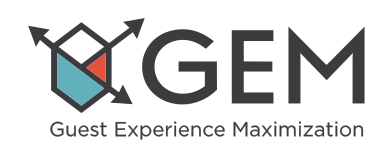The Vaccine Experience: Building it Better for Patients Everywhere

COVID-19 has been an object lesson in the complexity of quickly meeting the medical needs of millions of people. It has been an immense struggle to develop, distribute, and put vaccines to work at scale. Then, officials have struggled to solve the “last mile” problem to get the vaccine to those who need it. But here is where coupling outreach campaigns with real-life software development practices could have helped make the vaccine experience a far less frustrating process.
Iterate, Iterate, Iterate

As the federal response has accelerated, plans are moving forward for a centralized, national website to show where the vaccine is available. But scheduling is still being left up to local and state governments. This has led to the use of many different online platforms to let residents schedule vaccinations, and the result has been widespread confusion. There is no consistent standard, and many elderly adults end up enlisting their children or grandchildren to help navigate confusing websites.
There are lessons from the software development community that could be applied in this situation. The product development cycle is not always fast and waiting for the creation of a perfect scheduling solution burns up precious time. Software developers know the value of creating a minimal viable product (MVP) to get it into the hands of early adopters. From there is a continuing cycle of feedback and iteration. As the process continues, revisions produce a product that becomes more scalable and more robust. In “Understanding the MVP,” Braz Brandt describes the methodology as a means to quickly validate whether developers are on the right track:
When we’re creating MVPs, we’re intentionally building just enough functionality to ask the right questions of our customers – would you buy this product? Do these icons make sense? Does this workflow frustrate you, or does it help you find your next favorite restaurant?
Managing Expectations

The Conversation, in a report, attributes many of the problems encountered while trying to scale up the scheduling process up to simple insecurity: Naturally, the fear of being left out drives people to attempt to sign up as soon as appointment slots become available. This leads to a rush of people endlessly refreshing the same websites for the few appointments available.
This could be addressed by educating the public that the system capacity is designed to scale up in the order of increasing eligibility. By controlling expectations, there will be less disappointment and finger pointing as people try to schedule appointments. This means the software developers will coordinate the product releases in support of each of the groups. So, when general eligibility opens, the product is ready to support the demand.
Building the Next Product

Even the federal government has had trouble scaling up website capacity to meet the demand of thousands or millions of people, as illustrated during the launch of Affordable Care Act enrollment in 2013. Writing in The New York Times, Shira Ovide emphasizes the logistical challenges that state and local governments have faced getting vaccines to citizens: Imagine Amazon trying to manage all its orders and packages, except with confusing and constantly shifting orders from the bosses and after years of underinvestment in people and technology. Plus, no one has ever run a vaccine campaign on this scale and at this speed.
The development lessons learned during this time are extremely important. The COVID-19 pandemic will not be the world’s last health emergency. As the capacity to respond to it grows, the lessons learned are valuable. The future requires solutions capable to scale to meet the needs of billions of people. The foundation built today can help protect tomorrow.



